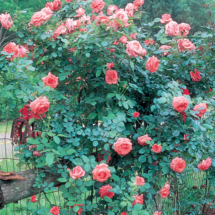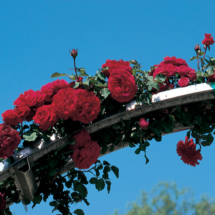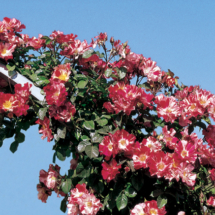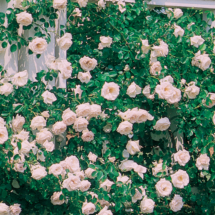According to the American Rose Society, climbing roses consist of three general types. Large flowered climbers (LCl) most often have tall stiff canes and blooms in both single and cluster flowered canes, and generally repeat bloom. Next are the rambler type climbers, which have flexible canes that require support and most often flowers with small blooms in clusters which usually do not repeat. Then there are sports (mutations) of hybrid teas, floribundas and others, which resemble their bush counterpart except for their climbing growth habit. These usually have an outstanding spring bloom, then only scattered bloom with more blooms in the fall. It seems the mutation which caused the vigorous growth habit, also affected the repeat bloom genes.
Roses do not really “climb” in the sense that other plants do; they do not twine, or have tendrils; they can sometimes hang onto something because of their prickles (thorns). Climbing roses are just roses that have a very vigorous growth habit.
| Rose | Type | Color | ARS Rating | Notes |
|---|---|---|---|---|
| America | Large climber | orange pink | 8.2 | @ |
| Don Juan | Large climber | dark red | 8.3 | |
| Eden (Pierre de Ronsard) | Large climber | pink blend | 8.3 | |
| Fourth of July | Large climber | red blend | 8.2 | @ |
| Jeanne Lajoie | Climbing miniture | medium pink | 8.9 | |
| New Dawn | Large climber | light pink | 8.4 | |
| Peggy Martin | Large climber | pink | 8.5 |
Notes:
@ – The rose was an All-American Rose Selections winner.
Click photo to enlarge.
All photos are copyrighted – click photo for copyright details.




